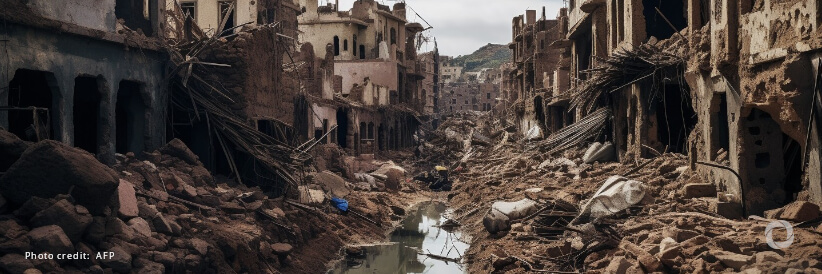Tropical Cyclone Tej hit Yemen’s eastern coast areas of Al Mahrah Governorate and Socotra archipelago. The storm moved towards the eastern regions of Hadramout Governorate. The affected areas experienced heavy and torrential rains that led to major damage to infrastructure including health facilities, roads, telecommunications lines and electricity.
In Al Mahrah Governorate, severe weather conditions and damage to roads hindered access to rescue stranded people and protect lives. Information about the situation remains limited but efforts are under way by local authorities and partners to access affected areas. Yemen’s health system is already overburdened with the direct impact of 9 years of conflict. Health facilities lack specialized doctors, medical supplies, and adequate infrastructure to address the most basic needs.
According to the United Nations Office for the Coordination of Humanitarian Affairs (OCHA), a local media outlet has reported at least 7 deaths, with more than 1000 people displaced. The same source attested that the authorities had declared a state of emergency and temporarily shut schools in Al Mahrah Governorate.
On Socotra Island, 2 minor injuries were reported and, fortunately, no deaths. A total of 192 households have been displaced, with 314 houses fully or partially damaged. It is not yet clear how many health facilities have been damaged. Main roads connecting the southern island to Socotra’s centre were affected, limiting access to these areas. Most roads to the town of Hadibu remain closed, with local authorities and medical teams unable to assess the damage.
Current situation
“WHO and other humanitarian actors are facing many obstacles and funding shortages to identify and respond to multisectoral needs,” said Dr Arturo Pesigan, WHO Representative in Yemen. “The unprepared hospitals in the affected areas will require fuel and medical supplies to enable rapid interventions to contain the surge in demand. Intravenous fluids; antibiotics; laboratory reagents; and medical kits for cholera, dengue and malaria are urgently needed in the affected areas.”
A fuel shortage represents a major problem for hospitals and emergency operations centres. WHO has been able to re-establish the satellite internet service for the Al Mahrah emergency operations centre. This is a lifeline as it is the only means of communication available to coordinate the emergency response, given the damage caused by Tropical Cyclone Tej to telecommunications and electricity infrastructure in the area.
The WHO-led Health Cluster is mobilizing collective efforts by all Mukalla Hub health partners and coordinating the movement of 3 mobile clinic teams to the affected areas. More than 4100 emergency kits have been dispatched through the Rapid Response Mechanism Cluster to the affected areas in Al Mahrah Governorate. As of 24 October, local authorities in Al Mahrah and Socotra have started to dislodge water and open roads.
Yemen’s Ministry of Public Health and Population, WHO and other partners have been supporting 2 main hospitals, 3 secondary hospitals and 61 public health centres. Additionally, WHO and the Health Cluster have dispatched essential medicines, surgical kits and medical supplies worth approximately US$ 80 000, and basic medical stockpiles have been provided to Socotra Island.

